 Facebook
Facebook
 X
X
 Instagram
Instagram
 TikTok
TikTok
 Youtube
Youtube
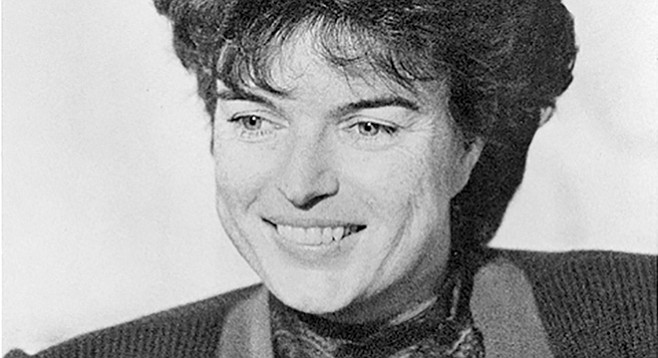
In the summer of 1987, San Diego Gas & Electric sent its employees a document declaring that its board “has an obligation and responsibility to serve the best interests of its shareholders while maintaining reliability of service to its customers.” (Emphasis mine.) In short, serving shareholders was important, but so, too, was serving ratepayers. In public appearances, executives would state that the board had several constituencies: shareholders, employees, customers, communities, the environment, vendors.

That same year, Southern California Edison, the utility covering the Los Angeles metropolitan area, assigned an executive, Vikram Budhraja, to study possible savings that might come from a merger of Edison and San Diego Gas & Electric.
His conclusion: there would be no significant savings for Edison from a takeover of San Diego Gas & Electric.
The following year, San Diego Gas & Electric was attempting a merger with Tucson Electric Power. Edison believed that such a combination would threaten its huge market share in Southern California. So Edison prepared to make a hostile bid for San Diego Gas & Electric — and to hide the Budhraja findings.
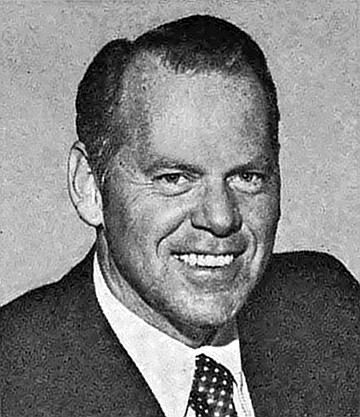
Edison executives, including Budhraja, went back to the drawing board to see if they could find “savings.” Lo and behold, they did — $1.7 billion in savings over a ten-year period. Still, that would be a tiny percentage of the combined companies’ revenues over the decade.
And the data were phony, according to administrative law judges who studied the stats in 1991. George P. Lewnes of the Federal Energy Regulatory Commission said that Edison and San Diego Gas & Electric — which by then had capitulated to Edison — had used fabricated numbers to find savings. Lewnes blasted “the unreliability of the companies’ methodology” and the use of data “woefully lacking in credibility” and “inherently speculative and incomplete.” The savings were baloney, said Lewnes.
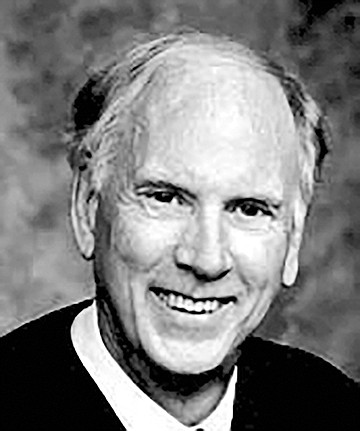
Two California administrative law judges were somewhat softer. They found $1 billion of savings over a decade, but after adjusting for inflation, the sum would be $613 million, and 94 percent of that would be labor savings — in other words, layoffs.
Mayor Maureen O’Connor, the San Diego City Council, the chamber of commerce, and the Coalition for Local Control worked to denounce Edison and convince the public that a merger was not in the public interest — largely because San Diego would lose a headquarters and employees and rates would go up, counter to Edison’s claim that they would go down. The groups such as the coalition didn’t have to spend much on advertising, because from the beginning, the San Diego public was overwhelmingly against the merger.
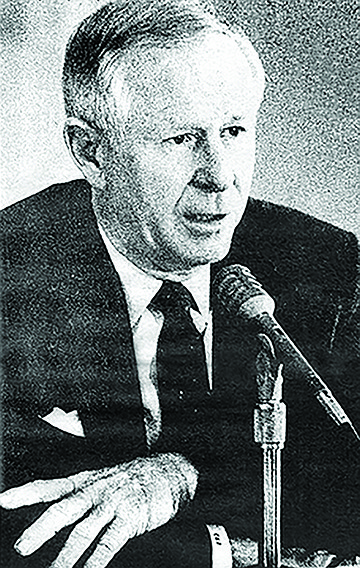
The community feared that Edison, with its snug relationship with the California Public Utilities Commission and its lobbying power, would have an easier time picking San Diegans’ pockets than San Diego Gas & Electric would. Members of the San Diego Gas & Electric board, holding fistfuls of stock, would rake in bucks, because Edison’s final bid was starkly above the market value of San Diego Gas & Electric stock.
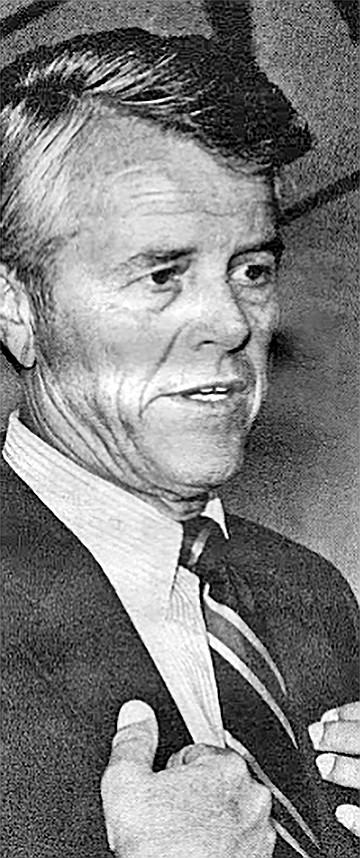
Right from the start, it was clear that Edison would be wholly disingenuous when coming up with calculations, and once San Diego Gas & Electric surrendered and joined Edison in trying to get regulators’ okay for the merger, the local utility would be dishonest, too. San Diego Gas & Electric originally intended to fight Edison. Its chief executive, Thomas Page, and a delegation from the company went to Helen Copley, owner of the Union and the Tribune, which would merge in the early 1990s.
For some reason I have never understood, the papers did not jump immediately to Page’s support, and Page thought it was hopeless. But Copley conferred with her close friend, Mayor O’Connor, and they got the ball rolling. I began writing anti-Edison columns, and the late reporter Charles Ross sharply dug into the details where Satan was hidden. Ed Fike, Union chief editorial writer, wrote columns denouncing the deal, the Tribune blasted it, and so did other media in San Diego.
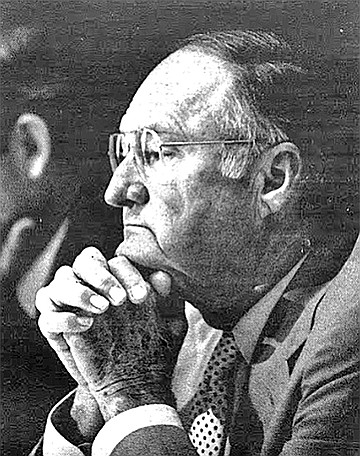
Once San Diego Gas & Electric’s board surrendered, this would be a planned marriage between the falsehearted and the fraudulent. The merger would create a $2.4 billion enterprise, the largest investor-owned electric company in the nation.
But mercifully, the merger was stopped before the partners could go through with it. San Diegans, led by O’Connor, local media, and business groups such as the chamber of commerce and the Coalition for Local Control, showed state and federal regulators that the merger was not in the public interest. In fact, it would be destructive to the public interest, because, in essence, Edison would have a license to steal from San Diego ratepayers, with the enthusiastic participation of former San Diego Gas & Electric board members, pillars of the community who stood to rake in a bundle of money if regulators okayed the deal.
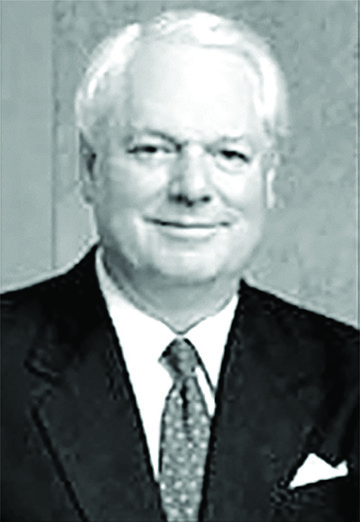
The public be damned
Presiding at the proposed nuptials would be a law firm, New York–based Skadden, Arps, Slate, Meagher & Flom. This firm had sleazy clients — among them, Mike Milken, the junk bond/takeover king who had spent a spell in prison for his corporate depredations. Actually, you could almost say that Skadden Arps invented the hostile takeover, at least the ugly kind that prevailed in the 1980s and 1990s, leading, in some cases, to organized-crime-connected companies taking over reputable American firms. Skadden Arps came up with an offensive maneuver to aid the raider. If a board refused to accept a so-called reasonable buyout offer, Skadden warned the members that stockholders of the target company — in this case San Diego Gas & Electric — would sue each board member individually on the grounds that those shareholders had lost an opportunity to make lots of loot had the deal gone through. Skadden talked big numbers: some board members might be wiped out financially defending themselves, the law firm claimed.
Skadden’s opinion, in short, was that the public be damned. Not only would the community lose jobs and a headquarters, but local cultural organizations and charities would surely suffer. With the headquarters gone, vendors would lose business, and that would ripple through the San Diego economy. The only important factor in a merger of two companies was the comfort of the shareholder, said Skadden. It intoned to the San Diego Gas & Electric board in 1988, “The board’s principal obligation is to its shareholders. This precept is at the very essence of the proposition that directors are fiduciaries for the shareholders. We are unaware of any authority suggesting that directors are fiduciaries for any other constituencies,” such as the community.
Skadden was saying, in legalese, “Greed is good.”
In 1988, the San Diego Gas & Electric board asked a local law firm, Gray, Cary, Ames & Frye (now DLA Piper), to render an opinion on the Skadden “Greed is good” pronouncement. Gray Cary agreed: “[The] belief in the importance of community well-being, however honestly and genuinely felt, has not been sustained in any reported California or Delaware case as a legitimate basis for turning down a merger proposal in which the economic terms are otherwise considered more than adequate.”
Gray Cary, founded in 1927 and San Diego’s largest law firm, was saying to its hometown, in legalese, “Screw you.”
Most San Diego Gas & Electric board members capitulated meekly. Chief executive Thomas Page and board members Malin Burnham, a real estate powerhouse, and Clair Burgener, a former congressman and mover and shaker, eventually surrendered to Edison. Page got a million-dollar bonus; he and three others were offered jobs with Edison. Indeed, San Diego Gas & Electric’s head lawyer, Stephen L. Baum, later gave a speech on electricity regulation at an American Bar Association annual conference in Denver. “Under certain circumstances, the duty of a director of a regulated public utility is virtually exclusively to shareholders,” said Baum, who, along with Page, would get a fat bonus if the deal were approved by state and federal regulators. “This duty may compel a decision to merge regardless of customer, community, or employee interest,” Baum told the lawyers.
Baum was telling San Diego: “To hell with you. My money is more important than your utility service.”
After the board had flown the surrender flag, San Diego Gas & Electric put out a proxy statement declaring, “While the San Diego Gas & Electric board recognized that the consummation of the merger may have some adverse effects on San Diego Gas & Electric’s employees, the San Diego community, and San Diego Gas & Electric’s other constituencies, in approving the merger the San Diego Gas & Electric board placed primary emphasis on the financial benefits to San Diego Gas & Electric’s shareholders.”
“This is callous and cynical,” said Mayor Maureen O’Connor. “People in the community have suspected all along that the San Diego Gas & Electric board knew the merger would have adverse effects on the community, but the board went ahead and agreed, because it benefited San Diego Gas & Electric shareholders. Now, they come out and say it in the proxy statement.”
In effect, the entire board was saying to San Diego, the company’s employees, the customers, the environment, “Ha ha ha. Utilities exist for only one thing: the owners’ money.”
I knew then that Baum, Edison, the San Diego Gas & Electric board, and Skadden had fed garbage to the community. Their thesis was dead wrong. One of the key arguments of Mayor O’Connor and others who opposed the Edison takeover was that utilities are granted a monopoly by local governments, and in return, the customers are the utility’s most important constituency. Baum may have known that — possibly a reason he wouldn’t return my call. I have always suspected that Baum bullied his fellow board members to cave in.
I still can remember Burnham telling me, “We didn’t want to sell the company, but …”
(Following a Delaware court’s decision in a later merger attempt, Skadden’s legal strategy mercifully lost its puissance.)
Two San Diego Gas & Electric board members, Charles “Red” Scott and O. Morris Sievert, both now deceased, would not succumb to the forces of greed. The Reader, in a spread running 28 pages, printed Scott’s testimony from a merger-related lawsuit. Scott was being deposed by a lawyer. Asked why board members surrendered, Scott testified, “There were some of the directors that were frightened, from their personal liability standpoint, that if they did not vote for it, they would be personally liable”; that is, they had bought Skadden’s buncombe.
Scott continued, “I felt from almost the beginning that a hostile acquisition by Edison would never take place. I felt there were just too many groups of people who would find it offensive and not in the best interest of the people of Southern California to let these two giants merge together and leave just one company.”
Scott was asked if he had ever questioned the financial arrangement between Skadden Arps and San Diego Gas & Electric. Yes, he had questioned it but didn’t get a satisfactory answer. He recalled being in a meeting with San Diego Gas & Electric’s board members. “It was a very hostile environment, and it was obvious that I was being spanked for asking such a naughty question,” replied Scott. (As it turned out, San Diego Gas & Electric had agreed to pay Skadden $3.5 million if the deal went through. That would have come out of the pockets of San Diego ratepayers.)
At a subsequent meeting, Scott learned that Edison had increased the amount it would pay for San Diego Gas & Electric, and the board accepted the offer. Scott said his fellow directors were chopping the legs out from under Sievert and him. Before long, both had resigned. That would leave the entire board in favor of a deal that the Reader, in a variation on a theme of Shakespeare, called a “Merger Most Foul.”
Edison’s lies and double dealing
Once it had deceived and browbeaten the San Diego Gas & Electric board into capitulating, Edison went about convincing the San Diego public, along with the California Public Utilities Commission (CPUC) and the Federal Energy Regulatory Commission, of the wisdom of the deal. Right from the outset, Edison’s arrogance was a strike against it. Edison thought of San Diegans as bumpkins. Edison was cocksure it would prevail. After all, two of its four top officers were former lobbyists, and one was a former official of the CPUC. (One of the former lobbyists was none other than Mike Peevey, an executive vice president who was in charge of the attempted takeover. I debated Peevey on TV, on the radio, and at group meetings. Later, he became president of Edison and, in an astonishing conflict of interest, was later named head of the CPUC. For the Reader, I wrote a number of columns about Peevey’s unfamiliarity with following established rules and telling the truth. I knew that from the experiences I had had two decades earlier.)
First, Edison set up two groups of local people who endorsed the takeover. San Diegans for the Merger was a group of locals who allegedly had no dog in this fight — just local folks wanting local residents to consider all options before making a decision. Such poppycock. A majority of the committee represented either businesses that had a relationship with Edison and stood to boost profits or people in charities that stood to get some moolah. San Diegans for the Merger launched a petition drive and sent out a newsletter to its members, leading cheers for Edison to triumph. One of the letters claimed that the merger would bring a 10 percent drop in rates for San Diegans –— a move that would have been illegal at the time. San Diegans for the Merger set up stands outside grocery stores. Hucksters shouted, “Sign this and you’ll get a 10 percent utility rate cut!” and “Force San Diego Gas & Electric to cut your utility rates 10 percent!” Larry O’Donnell, who was paid by Edison to head the group, said on the first page of the newsletter, “Regardless of whether you support or oppose the merger, if you don’t want to lose the benefits of lower rates, then it’s up to you to let the [California Public Utilities Commission] know you support the…rate reductions for San Diego.”
Okay, whether or not you support the merger, sign the petition, said O’Donnell. When he was interviewed by the San Diego Daily Transcript, O’Donnell said, “We believe the media will try and persuade the [CPUC] that everyone in San Diego is opposed to the merger.” Not so, quoth he, and the 150,000 who had signed the petition was proof. So sign the petition whether or not you favor the merger. But the big numbers of people signing the petition are proof positive that many San Diegans favor the merger. Hmmm. In a second effort, San Diegans for the Merger hedged it, but it was still misleading. The group put out a news release saying, “The mayor of San Diego and some local media pundits are telling the [CPUC] that San Diegans overwhelmingly reject the merger. One hundred and fifty thousand San Diegans are saying, ‘Promised rate reductions mean something to us.’”
Early on, the San Diego Gas & Electric board said that the promised rate cut was ridiculous. (That was before Edison dished out bonuses to top San Diego Gas & Electric executives and Skadden Arps pushed its ugly position on the shareholders being the sole constituency of the board.) At the same time it was claiming it would give San Diegans a 10 percent rate cut, Edison was raising rates, which would be headed even higher. But under utility laws of that time, selective ratemaking was a no-no; a utility couldn’t cut rates in one jurisdiction and raise them in another. Most importantly, the Office of Ratepayer Advocates, a unit of the CPUC, said the rate decrease gambit was “a temporary inducement to elicit support for the merger.” Amen to that.
“Who us? We’re virgins.”
Then there was Edison’s other phony group: The Committee for Fair Treatment. It claimed it was scrupulously neutral on the takeover. It claimed it just wanted to get balanced discussions going. Actually, it didn’t do anything but take in money from Edison and San Diego Gas & Electric for individual cultural and charitable groups and then talk up the merger in private conversations. Edison even claimed it had nothing to do with the group.
The group was headed by the late banker, Murray L. Galinson. He had talked with M. James Lorenz, who now is a senior federal judge in San Diego but during the takeover was a private attorney doing work for Edison — and serving as a major member of San Diegans for the Merger.
The late Danah Fayman, founder of the San Diego Foundation for the Performing Arts, was recruited. San Diego Gas & Electric had given $22,000 to the group over the previous two years. Edison had given the foundation $5000. And — golly, gee! — none other than the Wall Street law firm of Skadden Arps, which pushed the merger on San Diego Gas & Electric board members, chipped in $5000 to Fayman’s arts foundation.
Stephen Baum, the San Diego Gas & Electric lawyer who had hired Skadden Arps to intimidate Baum’s fellow board members, admitted that he had solicited San Diego Gas & Electric and Skadden Arps for donations, but insisted that he had nothing to do with putting Fayman on the committee, which, Baum insisted, was officially neutral. (Oh, yes. Baum went on to become chairman of Sempra, corporate parent of San Diego Gas & Electric. In 2004, he raked in $13.5 million in total compensation — including $1.1 million in salary, $2.2 million in bonuses, and $9.7 million in the value of stock options. The next year, he retired and would get $154,000 a month — that’s a month — in benefits.)
Others to join the supposedly neutral committee were Rev. George Walker Smith, who would receive a $2000 check from Edison earmarked for the United Negro College Fund, and beer distributor Ron Fowler, now executive chairman of the Padres ownership group, who claimed he was not influenced by the $10,500 that San Diego Gas & Electric gave to his favorite charity, the Hall of Champions.
Edison is still pulling similar stunts. Right now, it is in the process of burying nuclear waste 108 feet from the ocean at the San Onofre nuclear site. It still has a lot of tubes to bury. It set up a group, the Community Engagement Panel, to hold meetings that are supposed to be neutral. But that’s a pretense. The panel is clearly stacked with so-called experts favorable to Edison.
The lobbying company loses out
As previously discussed, Edison couldn’t disguise its contempt for San Diego. At one point, its chief executive referred to San Diego as “down there.” At first, the company said the savings from the proposed merger — mainly layoffs — would be concentrated in San Diego. There were screams from “down there,” and Edison stopped saying San Diego would bear the brunt of the cuts, although that might have been just another fib.
In utility mergers nationwide, it had always been assumed that 100 percent of the savings would go to ratepayers. But in late 1988, Edison’s chief executive, the late Howard Allen, went to a meeting of securities analysts in New York. Allen stated that since Edison proposed to pay such a high price for San Diego Gas & Electric, some of the savings — phantom savings, really, because realistically there were few — should be passed on to shareholders.
Wall Street applauded, but the huzzahs never got beyond Gotham. The late Charles Ross, who was doing a yeoman job covering the story for the San Diego Union, called Edison and demanded an explanation. The response was typical Edison prevarication: it issued a press release saying it had never had such plans. Allen had mistakenly inserted the sentences into the Wall Street speech. Ross dug up internal documents clearly showing that the Edison board had been fully informed of the plan, and Edison executives had been briefed on it the night before Allen’s speech. Still, Edison’s public relations machine stuck to the fable that Allen had mistakenly mentioned the scheme in his speech. Despite this denial, securities analysts for the next couple of months would mention in their reports that Edison stockholders might get some of the merger savings. Analysts normally get their information straight from the company they are reporting on.
By this time, Mayor Maureen O’Connor could only chuckle that this blockheaded episode of corporate fabrication was typical of Edison. The company was mistakenly known for its shrewd lobbying and public relations, but it couldn’t stop stumbling over its own lies. She had an easy time persuading the city council to oppose Edison’s raid. After the merger was turned down, I tried to make friends with San Diego Gas & Electric brass. Over one lunch, I learned that after San Diego Gas & Electric had surrendered, Page went to Edison and suggested that he become an officer. Had I known that, I would have written at the time that it would never work. Page is an engineer. He would never have fit into Edison’s lobby/political culture.
The city hired Washington, D.C. law firms that specialized in utilities matters. I found that they refused to be optimistic. One lawyer who was dealing with the Federal Energy Regulatory Commission warned me, “These regulators are not put there to block mergers.” Indeed, Wall Street was predicting a consolidation wave among the nation’s utilities.
Edison had the edge, but it didn’t have the smarts. With a push from San Diego lobbyists and legislators, a number of bills were introduced into the legislature to defeat the merger. However, San Diego was fighting a lobbying machine in Edison. Edison spent its time and energy fighting each of those bills and appeared to be neglecting a major issue: a merger of utilities as large as these could adversely affect competition. This was all taking place during the presidency of George H. W. Bush, who followed the pro-competition, pro-free-market theology of Ronald Reagan. San Diego repeated and repeated that Edison’s bid was “anticompetitive.”
In 1991, it became evident that regulators didn’t like this merger. Administrative law judges from the California Public Utilities Commission thumbed it down. So did the commission itself, unanimously. The Federal Energy Regulatory Commission joined the thumbs-down parade. By May of 1991 it was all over. Edison threw in the towel. It had spent about $100 million on communications expenses and legal fees. By contrast, the Coalition for Local Control, the San Diego group opposing the Merger Most Foul, had spent only $80,000.
Among regulators, the argument against concentration of power in a monopoly was important. But I always believed that Edison’s bumbling and bullying may have been an equally important force in convincing regulators that this merger would never work.


In the summer of 1987, San Diego Gas & Electric sent its employees a document declaring that its board “has an obligation and responsibility to serve the best interests of its shareholders while maintaining reliability of service to its customers.” (Emphasis mine.) In short, serving shareholders was important, but so, too, was serving ratepayers. In public appearances, executives would state that the board had several constituencies: shareholders, employees, customers, communities, the environment, vendors.

That same year, Southern California Edison, the utility covering the Los Angeles metropolitan area, assigned an executive, Vikram Budhraja, to study possible savings that might come from a merger of Edison and San Diego Gas & Electric.
His conclusion: there would be no significant savings for Edison from a takeover of San Diego Gas & Electric.
The following year, San Diego Gas & Electric was attempting a merger with Tucson Electric Power. Edison believed that such a combination would threaten its huge market share in Southern California. So Edison prepared to make a hostile bid for San Diego Gas & Electric — and to hide the Budhraja findings.

Edison executives, including Budhraja, went back to the drawing board to see if they could find “savings.” Lo and behold, they did — $1.7 billion in savings over a ten-year period. Still, that would be a tiny percentage of the combined companies’ revenues over the decade.
And the data were phony, according to administrative law judges who studied the stats in 1991. George P. Lewnes of the Federal Energy Regulatory Commission said that Edison and San Diego Gas & Electric — which by then had capitulated to Edison — had used fabricated numbers to find savings. Lewnes blasted “the unreliability of the companies’ methodology” and the use of data “woefully lacking in credibility” and “inherently speculative and incomplete.” The savings were baloney, said Lewnes.

Two California administrative law judges were somewhat softer. They found $1 billion of savings over a decade, but after adjusting for inflation, the sum would be $613 million, and 94 percent of that would be labor savings — in other words, layoffs.
Mayor Maureen O’Connor, the San Diego City Council, the chamber of commerce, and the Coalition for Local Control worked to denounce Edison and convince the public that a merger was not in the public interest — largely because San Diego would lose a headquarters and employees and rates would go up, counter to Edison’s claim that they would go down. The groups such as the coalition didn’t have to spend much on advertising, because from the beginning, the San Diego public was overwhelmingly against the merger.

The community feared that Edison, with its snug relationship with the California Public Utilities Commission and its lobbying power, would have an easier time picking San Diegans’ pockets than San Diego Gas & Electric would. Members of the San Diego Gas & Electric board, holding fistfuls of stock, would rake in bucks, because Edison’s final bid was starkly above the market value of San Diego Gas & Electric stock.

Right from the start, it was clear that Edison would be wholly disingenuous when coming up with calculations, and once San Diego Gas & Electric surrendered and joined Edison in trying to get regulators’ okay for the merger, the local utility would be dishonest, too. San Diego Gas & Electric originally intended to fight Edison. Its chief executive, Thomas Page, and a delegation from the company went to Helen Copley, owner of the Union and the Tribune, which would merge in the early 1990s.
For some reason I have never understood, the papers did not jump immediately to Page’s support, and Page thought it was hopeless. But Copley conferred with her close friend, Mayor O’Connor, and they got the ball rolling. I began writing anti-Edison columns, and the late reporter Charles Ross sharply dug into the details where Satan was hidden. Ed Fike, Union chief editorial writer, wrote columns denouncing the deal, the Tribune blasted it, and so did other media in San Diego.

Once San Diego Gas & Electric’s board surrendered, this would be a planned marriage between the falsehearted and the fraudulent. The merger would create a $2.4 billion enterprise, the largest investor-owned electric company in the nation.
But mercifully, the merger was stopped before the partners could go through with it. San Diegans, led by O’Connor, local media, and business groups such as the chamber of commerce and the Coalition for Local Control, showed state and federal regulators that the merger was not in the public interest. In fact, it would be destructive to the public interest, because, in essence, Edison would have a license to steal from San Diego ratepayers, with the enthusiastic participation of former San Diego Gas & Electric board members, pillars of the community who stood to rake in a bundle of money if regulators okayed the deal.

The public be damned
Presiding at the proposed nuptials would be a law firm, New York–based Skadden, Arps, Slate, Meagher & Flom. This firm had sleazy clients — among them, Mike Milken, the junk bond/takeover king who had spent a spell in prison for his corporate depredations. Actually, you could almost say that Skadden Arps invented the hostile takeover, at least the ugly kind that prevailed in the 1980s and 1990s, leading, in some cases, to organized-crime-connected companies taking over reputable American firms. Skadden Arps came up with an offensive maneuver to aid the raider. If a board refused to accept a so-called reasonable buyout offer, Skadden warned the members that stockholders of the target company — in this case San Diego Gas & Electric — would sue each board member individually on the grounds that those shareholders had lost an opportunity to make lots of loot had the deal gone through. Skadden talked big numbers: some board members might be wiped out financially defending themselves, the law firm claimed.
Skadden’s opinion, in short, was that the public be damned. Not only would the community lose jobs and a headquarters, but local cultural organizations and charities would surely suffer. With the headquarters gone, vendors would lose business, and that would ripple through the San Diego economy. The only important factor in a merger of two companies was the comfort of the shareholder, said Skadden. It intoned to the San Diego Gas & Electric board in 1988, “The board’s principal obligation is to its shareholders. This precept is at the very essence of the proposition that directors are fiduciaries for the shareholders. We are unaware of any authority suggesting that directors are fiduciaries for any other constituencies,” such as the community.
Skadden was saying, in legalese, “Greed is good.”
In 1988, the San Diego Gas & Electric board asked a local law firm, Gray, Cary, Ames & Frye (now DLA Piper), to render an opinion on the Skadden “Greed is good” pronouncement. Gray Cary agreed: “[The] belief in the importance of community well-being, however honestly and genuinely felt, has not been sustained in any reported California or Delaware case as a legitimate basis for turning down a merger proposal in which the economic terms are otherwise considered more than adequate.”
Gray Cary, founded in 1927 and San Diego’s largest law firm, was saying to its hometown, in legalese, “Screw you.”
Most San Diego Gas & Electric board members capitulated meekly. Chief executive Thomas Page and board members Malin Burnham, a real estate powerhouse, and Clair Burgener, a former congressman and mover and shaker, eventually surrendered to Edison. Page got a million-dollar bonus; he and three others were offered jobs with Edison. Indeed, San Diego Gas & Electric’s head lawyer, Stephen L. Baum, later gave a speech on electricity regulation at an American Bar Association annual conference in Denver. “Under certain circumstances, the duty of a director of a regulated public utility is virtually exclusively to shareholders,” said Baum, who, along with Page, would get a fat bonus if the deal were approved by state and federal regulators. “This duty may compel a decision to merge regardless of customer, community, or employee interest,” Baum told the lawyers.
Baum was telling San Diego: “To hell with you. My money is more important than your utility service.”
After the board had flown the surrender flag, San Diego Gas & Electric put out a proxy statement declaring, “While the San Diego Gas & Electric board recognized that the consummation of the merger may have some adverse effects on San Diego Gas & Electric’s employees, the San Diego community, and San Diego Gas & Electric’s other constituencies, in approving the merger the San Diego Gas & Electric board placed primary emphasis on the financial benefits to San Diego Gas & Electric’s shareholders.”
“This is callous and cynical,” said Mayor Maureen O’Connor. “People in the community have suspected all along that the San Diego Gas & Electric board knew the merger would have adverse effects on the community, but the board went ahead and agreed, because it benefited San Diego Gas & Electric shareholders. Now, they come out and say it in the proxy statement.”
In effect, the entire board was saying to San Diego, the company’s employees, the customers, the environment, “Ha ha ha. Utilities exist for only one thing: the owners’ money.”
I knew then that Baum, Edison, the San Diego Gas & Electric board, and Skadden had fed garbage to the community. Their thesis was dead wrong. One of the key arguments of Mayor O’Connor and others who opposed the Edison takeover was that utilities are granted a monopoly by local governments, and in return, the customers are the utility’s most important constituency. Baum may have known that — possibly a reason he wouldn’t return my call. I have always suspected that Baum bullied his fellow board members to cave in.
I still can remember Burnham telling me, “We didn’t want to sell the company, but …”
(Following a Delaware court’s decision in a later merger attempt, Skadden’s legal strategy mercifully lost its puissance.)
Two San Diego Gas & Electric board members, Charles “Red” Scott and O. Morris Sievert, both now deceased, would not succumb to the forces of greed. The Reader, in a spread running 28 pages, printed Scott’s testimony from a merger-related lawsuit. Scott was being deposed by a lawyer. Asked why board members surrendered, Scott testified, “There were some of the directors that were frightened, from their personal liability standpoint, that if they did not vote for it, they would be personally liable”; that is, they had bought Skadden’s buncombe.
Scott continued, “I felt from almost the beginning that a hostile acquisition by Edison would never take place. I felt there were just too many groups of people who would find it offensive and not in the best interest of the people of Southern California to let these two giants merge together and leave just one company.”
Scott was asked if he had ever questioned the financial arrangement between Skadden Arps and San Diego Gas & Electric. Yes, he had questioned it but didn’t get a satisfactory answer. He recalled being in a meeting with San Diego Gas & Electric’s board members. “It was a very hostile environment, and it was obvious that I was being spanked for asking such a naughty question,” replied Scott. (As it turned out, San Diego Gas & Electric had agreed to pay Skadden $3.5 million if the deal went through. That would have come out of the pockets of San Diego ratepayers.)
At a subsequent meeting, Scott learned that Edison had increased the amount it would pay for San Diego Gas & Electric, and the board accepted the offer. Scott said his fellow directors were chopping the legs out from under Sievert and him. Before long, both had resigned. That would leave the entire board in favor of a deal that the Reader, in a variation on a theme of Shakespeare, called a “Merger Most Foul.”
Edison’s lies and double dealing
Once it had deceived and browbeaten the San Diego Gas & Electric board into capitulating, Edison went about convincing the San Diego public, along with the California Public Utilities Commission (CPUC) and the Federal Energy Regulatory Commission, of the wisdom of the deal. Right from the outset, Edison’s arrogance was a strike against it. Edison thought of San Diegans as bumpkins. Edison was cocksure it would prevail. After all, two of its four top officers were former lobbyists, and one was a former official of the CPUC. (One of the former lobbyists was none other than Mike Peevey, an executive vice president who was in charge of the attempted takeover. I debated Peevey on TV, on the radio, and at group meetings. Later, he became president of Edison and, in an astonishing conflict of interest, was later named head of the CPUC. For the Reader, I wrote a number of columns about Peevey’s unfamiliarity with following established rules and telling the truth. I knew that from the experiences I had had two decades earlier.)
First, Edison set up two groups of local people who endorsed the takeover. San Diegans for the Merger was a group of locals who allegedly had no dog in this fight — just local folks wanting local residents to consider all options before making a decision. Such poppycock. A majority of the committee represented either businesses that had a relationship with Edison and stood to boost profits or people in charities that stood to get some moolah. San Diegans for the Merger launched a petition drive and sent out a newsletter to its members, leading cheers for Edison to triumph. One of the letters claimed that the merger would bring a 10 percent drop in rates for San Diegans –— a move that would have been illegal at the time. San Diegans for the Merger set up stands outside grocery stores. Hucksters shouted, “Sign this and you’ll get a 10 percent utility rate cut!” and “Force San Diego Gas & Electric to cut your utility rates 10 percent!” Larry O’Donnell, who was paid by Edison to head the group, said on the first page of the newsletter, “Regardless of whether you support or oppose the merger, if you don’t want to lose the benefits of lower rates, then it’s up to you to let the [California Public Utilities Commission] know you support the…rate reductions for San Diego.”
Okay, whether or not you support the merger, sign the petition, said O’Donnell. When he was interviewed by the San Diego Daily Transcript, O’Donnell said, “We believe the media will try and persuade the [CPUC] that everyone in San Diego is opposed to the merger.” Not so, quoth he, and the 150,000 who had signed the petition was proof. So sign the petition whether or not you favor the merger. But the big numbers of people signing the petition are proof positive that many San Diegans favor the merger. Hmmm. In a second effort, San Diegans for the Merger hedged it, but it was still misleading. The group put out a news release saying, “The mayor of San Diego and some local media pundits are telling the [CPUC] that San Diegans overwhelmingly reject the merger. One hundred and fifty thousand San Diegans are saying, ‘Promised rate reductions mean something to us.’”
Early on, the San Diego Gas & Electric board said that the promised rate cut was ridiculous. (That was before Edison dished out bonuses to top San Diego Gas & Electric executives and Skadden Arps pushed its ugly position on the shareholders being the sole constituency of the board.) At the same time it was claiming it would give San Diegans a 10 percent rate cut, Edison was raising rates, which would be headed even higher. But under utility laws of that time, selective ratemaking was a no-no; a utility couldn’t cut rates in one jurisdiction and raise them in another. Most importantly, the Office of Ratepayer Advocates, a unit of the CPUC, said the rate decrease gambit was “a temporary inducement to elicit support for the merger.” Amen to that.
“Who us? We’re virgins.”
Then there was Edison’s other phony group: The Committee for Fair Treatment. It claimed it was scrupulously neutral on the takeover. It claimed it just wanted to get balanced discussions going. Actually, it didn’t do anything but take in money from Edison and San Diego Gas & Electric for individual cultural and charitable groups and then talk up the merger in private conversations. Edison even claimed it had nothing to do with the group.
The group was headed by the late banker, Murray L. Galinson. He had talked with M. James Lorenz, who now is a senior federal judge in San Diego but during the takeover was a private attorney doing work for Edison — and serving as a major member of San Diegans for the Merger.
The late Danah Fayman, founder of the San Diego Foundation for the Performing Arts, was recruited. San Diego Gas & Electric had given $22,000 to the group over the previous two years. Edison had given the foundation $5000. And — golly, gee! — none other than the Wall Street law firm of Skadden Arps, which pushed the merger on San Diego Gas & Electric board members, chipped in $5000 to Fayman’s arts foundation.
Stephen Baum, the San Diego Gas & Electric lawyer who had hired Skadden Arps to intimidate Baum’s fellow board members, admitted that he had solicited San Diego Gas & Electric and Skadden Arps for donations, but insisted that he had nothing to do with putting Fayman on the committee, which, Baum insisted, was officially neutral. (Oh, yes. Baum went on to become chairman of Sempra, corporate parent of San Diego Gas & Electric. In 2004, he raked in $13.5 million in total compensation — including $1.1 million in salary, $2.2 million in bonuses, and $9.7 million in the value of stock options. The next year, he retired and would get $154,000 a month — that’s a month — in benefits.)
Others to join the supposedly neutral committee were Rev. George Walker Smith, who would receive a $2000 check from Edison earmarked for the United Negro College Fund, and beer distributor Ron Fowler, now executive chairman of the Padres ownership group, who claimed he was not influenced by the $10,500 that San Diego Gas & Electric gave to his favorite charity, the Hall of Champions.
Edison is still pulling similar stunts. Right now, it is in the process of burying nuclear waste 108 feet from the ocean at the San Onofre nuclear site. It still has a lot of tubes to bury. It set up a group, the Community Engagement Panel, to hold meetings that are supposed to be neutral. But that’s a pretense. The panel is clearly stacked with so-called experts favorable to Edison.
The lobbying company loses out
As previously discussed, Edison couldn’t disguise its contempt for San Diego. At one point, its chief executive referred to San Diego as “down there.” At first, the company said the savings from the proposed merger — mainly layoffs — would be concentrated in San Diego. There were screams from “down there,” and Edison stopped saying San Diego would bear the brunt of the cuts, although that might have been just another fib.
In utility mergers nationwide, it had always been assumed that 100 percent of the savings would go to ratepayers. But in late 1988, Edison’s chief executive, the late Howard Allen, went to a meeting of securities analysts in New York. Allen stated that since Edison proposed to pay such a high price for San Diego Gas & Electric, some of the savings — phantom savings, really, because realistically there were few — should be passed on to shareholders.
Wall Street applauded, but the huzzahs never got beyond Gotham. The late Charles Ross, who was doing a yeoman job covering the story for the San Diego Union, called Edison and demanded an explanation. The response was typical Edison prevarication: it issued a press release saying it had never had such plans. Allen had mistakenly inserted the sentences into the Wall Street speech. Ross dug up internal documents clearly showing that the Edison board had been fully informed of the plan, and Edison executives had been briefed on it the night before Allen’s speech. Still, Edison’s public relations machine stuck to the fable that Allen had mistakenly mentioned the scheme in his speech. Despite this denial, securities analysts for the next couple of months would mention in their reports that Edison stockholders might get some of the merger savings. Analysts normally get their information straight from the company they are reporting on.
By this time, Mayor Maureen O’Connor could only chuckle that this blockheaded episode of corporate fabrication was typical of Edison. The company was mistakenly known for its shrewd lobbying and public relations, but it couldn’t stop stumbling over its own lies. She had an easy time persuading the city council to oppose Edison’s raid. After the merger was turned down, I tried to make friends with San Diego Gas & Electric brass. Over one lunch, I learned that after San Diego Gas & Electric had surrendered, Page went to Edison and suggested that he become an officer. Had I known that, I would have written at the time that it would never work. Page is an engineer. He would never have fit into Edison’s lobby/political culture.
The city hired Washington, D.C. law firms that specialized in utilities matters. I found that they refused to be optimistic. One lawyer who was dealing with the Federal Energy Regulatory Commission warned me, “These regulators are not put there to block mergers.” Indeed, Wall Street was predicting a consolidation wave among the nation’s utilities.
Edison had the edge, but it didn’t have the smarts. With a push from San Diego lobbyists and legislators, a number of bills were introduced into the legislature to defeat the merger. However, San Diego was fighting a lobbying machine in Edison. Edison spent its time and energy fighting each of those bills and appeared to be neglecting a major issue: a merger of utilities as large as these could adversely affect competition. This was all taking place during the presidency of George H. W. Bush, who followed the pro-competition, pro-free-market theology of Ronald Reagan. San Diego repeated and repeated that Edison’s bid was “anticompetitive.”
In 1991, it became evident that regulators didn’t like this merger. Administrative law judges from the California Public Utilities Commission thumbed it down. So did the commission itself, unanimously. The Federal Energy Regulatory Commission joined the thumbs-down parade. By May of 1991 it was all over. Edison threw in the towel. It had spent about $100 million on communications expenses and legal fees. By contrast, the Coalition for Local Control, the San Diego group opposing the Merger Most Foul, had spent only $80,000.
Among regulators, the argument against concentration of power in a monopoly was important. But I always believed that Edison’s bumbling and bullying may have been an equally important force in convincing regulators that this merger would never work.